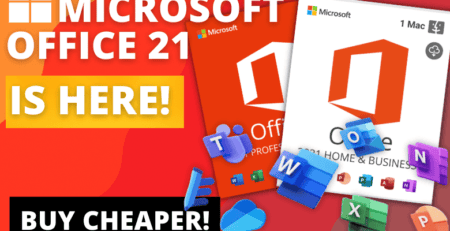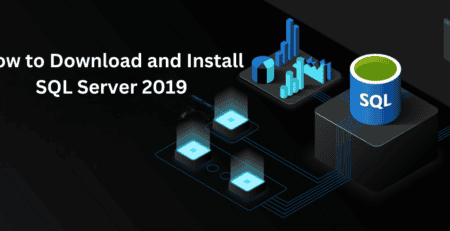Unlocking Savings: Why an Online Software Purchase is Your Best Bet
Unlocking Savings: Why an Online Software Purchase is Your Best Bet
In the digital age, the way we buy software has changed. The shift from physical stores to online platforms has been significant.
Online software purchase is now the norm. It’s a trend that’s here to stay.
But why is buying software online becoming so popular? The reasons are many.
Firstly, it’s about convenience. With a few clicks, you can buy and download software. No need to leave your home or office.
Secondly, it’s about cost savings. Online platforms often offer competitive prices. They also have regular sales and discounts.
Thirdly, it’s about variety. Online stores offer a wide range of software. From mainstream to niche products, you can find it all.
But it’s not just about buying. It’s also about managing your software.
Online platforms allow you to manage your software licenses. You can easily update or renew your software. You can also track your purchases and expenses.
Moreover, online software purchase is secure. Trusted platforms use secure payment gateways. They also offer money-back guarantees and customer support.
But it’s not just about the present. It’s also about the future.
The future of software is online. Cloud-based software and Software as a Service (SaaS) are on the rise. These models offer flexibility and scalability.
Online software purchase also supports sustainability. It reduces the need for physical packaging. It also eliminates shipping, reducing carbon emissions.
Furthermore, online software purchase is inclusive. It offers access to software for everyone, everywhere. It also supports independent developers and small businesses.
But it’s not just about buying. It’s also about learning.
Online platforms offer resources to help you make informed decisions. They provide product descriptions, customer reviews, and comparison tools.
Moreover, online software purchase is about community. Many platforms offer forums for peer support and advice. They also offer personalized recommendations based on your past purchases.
In conclusion, online software purchase is your best bet. It offers convenience, cost savings, and variety. It also offers security, sustainability, and inclusivity.
But it’s not just about buying. It’s also about managing, learning, and connecting.
So, are you ready to unlock savings with online software purchase? This article will guide you.
We will explore the benefits of buying software online. We will also provide tips on how to navigate online purchases.
We will discuss software licensing and terms. We will also share tips for a secure online purchase.
So, let’s dive in. Let’s unlock savings with online software purchase.
Welcome to the future of software buying. Welcome to the world of online software purchase.
Introduction
In today’s fast-paced digital world, software plays a crucial role. It powers businesses, enhances creativity, and simplifies tasks. Gone are the days of visiting a store to buy software physically. The traditional methods have gradually given way to more innovative approaches.
The advent of the internet has revolutionized how we purchase software. With the click of a button, we can access a myriad of software options. This ease of access is reshaping the way consumers think about purchasing.
The shift towards online software purchases is not just a trend; it’s an evolution. This evolution offers unparalleled convenience, cost-effectiveness, and a broad spectrum of options. As this approach becomes mainstream, it’s essential to understand the reasons behind this transformation and what benefits it brings.
The Shift to Online Software Purchases
Over the past decade, the internet has transformed from a novel convenience into an integral part of daily life. This transformation has changed how we interact, work, and shop, including how we acquire software. Moving from the tangible realm of physical boxes to digital downloads was a natural progression.
Today, more people than ever are realizing the advantages of buying software online. This shift is driven by several factors. For one, the digital marketplace offers a level of convenience unparalleled by brick-and-mortar stores. No longer bound by geographical limitations, consumers can access a vast array of software options from the comfort of their homes.
Several notable advantages come from embracing digital purchasing:
-
Accessibility: Software is always within reach, regardless of time or place. This is essential for global users operating in different time zones.
-
Instant Gratification: The ability to download software immediately after purchase eliminates waiting periods and shipping delays.
-
Broad Selections: Online shopping is not restricted to shelf space, allowing for a broader selection of products.
Moreover, digital transactions reduce overhead costs for sellers, often resulting in better deals for customers. As online infrastructure improves and more people gain internet access, this shift towards digital software acquisition will continue to gain momentum.
Benefits of Purchasing Software Online
Buying software online comes with numerous benefits. One of the most obvious is convenience. You can purchase, download, and install from the comfort of your home.
Moreover, online platforms often offer exclusive discounts and promotions. These deals are hard to come by in physical stores. Online purchases also make price comparison easy. With just a few clicks, you can compare prices across multiple sites.
Another significant advantage of buying software online is the extensive variety. Many online platforms host hundreds, if not thousands, of software applications. This vast selection covers everything from essential tools to niche products.
Some of the key benefits include:
-
Time Efficiency: Avoid travel and waiting in queues.
-
Eco-Friendly: Reduces physical waste and resource consumption.
-
24/7 Availability: Purchase at any time without time constraints.
In addition to these practical benefits, buying software online is generally more secure than traditional methods. This is primarily due to better fraud prevention measures and the assurance of getting genuine licenses.
Convenience
When it comes to purchasing convenience, online software purchases excel. One of the most appealing features is the ability to browse through an exhaustive catalog of options, all within a few clicks.
Gone are the days of physical shopping that requires commuting or dealing with store hours. Online shopping allows users to make purchases at any time, be it day or night, weekday, or holiday. This flexibility is a game-changer for professionals with busy schedules and those who need to make urgent acquisitions.
Here’s why convenience is a strong selling point:
- Anytime Shopping: No more rushing to make it before closing time.
- Multiplatform Access: Buy software using a computer, tablet, or smartphone.
- No Geographical Limitations: Access international products from a domestic setting.
Even customer support is easier to access online. Most platforms offer chat support, FAQs, and other resources right at your fingertips. This convenience extends further to the installation process, which tends to be streamlined when handled through digital downloads.
Cost Savings
One of the most compelling reasons to opt for online software purchases is the potential for significant cost savings. When buying software digitally, you often dodge the markup that physical retailers add to cover overhead costs like rent and utilities.
In many cases, online platforms frequently offer exclusive deals, discounts, or bundled packages. These promotions are aimed at attracting a large number of customers, enabling you to save considerably on software purchases.
Online Savings Opportunities Include:
- Bundled Deals: Buy multiple licenses for a discount.
- Seasonal Sales: Take advantage of Black Friday, Cyber Monday, or special campaigns.
- Referral Discounts: Earn savings by recommending software to friends or colleagues.
In addition, without the need to produce, package, and ship physical copies of software, online platforms can pass those savings onto the consumer. This reduces the environmental impact while cushioning your wallet.
Variety
The sheer variety available online is staggering. Unlike physical stores that are limited by space, online platforms offer thousands of software applications across genres and functionalities. This selection includes everything from enterprise-level solutions to specific industry tools and consumer software.
Online platforms serve as vast marketplaces where developers from around the world can showcase their products. This global presence ensures you will likely find the right tool, even if it’s something niche or specific to an industry.
Enjoy these aspects of a rich online catalog:
- Comprehensive Categories: Business, creative, educational, entertainment, and more.
- User Reviews: Access a wealth of information from customers who’ve tested the software.
- Customization Options: Many software packages allow you to tailor the purchase to your needs.
Ultimately, the variety offered by online software stores means you’re more likely to find a product that fits your needs perfectly. Whether you’re a business looking for specific functionality or a user interested in exploring new software, the online landscape has something for everyone.
How to Effectively Navigate Online Software Purchases
Navigating the world of online software purchases can be daunting at first. However, with the right strategies, it becomes a seamless process. Understanding your needs is the first step on this journey. Knowing exactly what you require sets a clear path for exploration, comparison, and acquisition.
Once you’ve assessed your needs, diving into research is essential. This helps uncover available options that fit your criteria. It’s not just about finding any software but the one that best serves your purpose.
After identifying potential options, price comparison is the next logical step. With numerous platforms offering varied pricing, taking time to compare will ensure you’re getting the best deal. This combines knowledge and strategy, empowering you to make an informed purchase.
Beyond just finding the right software, understanding licensing and terms is vital. The details in the fine print can significantly affect your usage rights and long-term cost. Make sure to review all terms before making your final decision.
The process culminates in a secure transaction. Ensuring the legitimacy of the vendor and the security of the transaction is crucial to protect your investment. This systematic approach not only saves money but also enhances the overall purchasing experience.
Assessing Your Needs
The cornerstone of a successful online software purchase is understanding your needs. Before embarking on the purchase journey, ask yourself key questions. What specific problem do you need the software to solve? Is it for personal use, educational purposes, or business applications? Clearly defining your requirements narrows down the plethora of choices.
Consider your current and future needs. Software purchases are often an investment, and anticipating future requirements can save you time and additional costs down the line. Determine if you need scalability, cross-platform compatibility, or specific features. Knowing these details helps to pinpoint software that aligns with both your immediate needs and potential growth.
Evaluating the technical aspects of your environment is also critical. Does the software need to integrate with existing tools? Do you have the hardware specifications required for optimal performance? These answers ensure that your purchase will not only meet your needs but also function efficiently within your existing systems.
Researching Software Options
Once your needs are clear, it’s time to delve into research. Begin by exploring multiple sources to gather comprehensive data on available software solutions. This broadens your perspective and uncovers options that may not be readily apparent.
Leverage resources such as software review sites, customer testimonials, and expert opinions. These insights can reveal the strengths and limitations of various products. Forums and user groups can also provide invaluable information from real users who have hands-on experience with the software in question.
When researching, consider these factors:
- User Interface: Is the software intuitive and easy to use?
- Support and Documentation: Is there enough guidance available if you encounter issues?
- Updates and Maintenance: How frequently is the software updated to meet new needs or challenges?
Your goal is to shortlist a few robust options that promise to deliver on your expectations. This makes the subsequent steps more efficient and straightforward.
Comparing Prices
Price comparison is a critical step in maximizing value. With numerous platforms vying for your attention, prices can vary significantly even for the same software. This discrepancy presents a prime opportunity for savings if navigated wisely.
Start by visiting various online marketplaces and official websites. Check for bundle deals or promotional offers that may offer better value for your money. Consider ongoing costs as well, such as subscription fees or upgrade charges.
When comparing, consider these aspects:
- Base Price: How does the initial cost compare across platforms?
- Long-term Costs: Are there hidden costs associated with updates or support?
- Discounts and Promotions: Are there any current or upcoming deals?
Timing your purchase around special sales events like Black Friday or Cyber Monday could also yield additional discounts. Taking the time to thoroughly compare prices can lead to substantial savings and a more satisfying purchase.
By following these steps, you ensure a more strategic and informed approach to buying software online. It’s more than just finding a good deal; it’s about finding the right solution at the right price, ensuring both current satisfaction and future benefits.
Understanding Licensing and Terms
Navigating the complexities of software licensing can be challenging. Yet, understanding these terms is crucial for a successful online software purchase. Without clarity on the licensing models and their implications, you risk unexpected costs or limitations in usage. Careful examination ensures you get the maximum value from your purchase and avoid potential legal troubles.
License agreements define what you can and cannot do with the software. Some licenses might restrict installation to a single device, while others offer more flexibility. These variations often influence both the price and the practicality of the software for your specific needs. Being informed about these distinctions enables a better alignment of your expectations with reality.
Another essential aspect is the duration of the license. Some licenses are perpetual, granting use indefinitely with a one-time fee. Others might be subscription-based, necessitating recurring payments. Knowing the duration assists in budgeting and long-term planning. Financial predictability is crucial, especially for businesses managing several software solutions.
Licensing terms may also impact software updates and customer support. Some agreements include free updates and dedicated support, while others may charge additional fees. Understanding what’s included ensures you’re not blindsided by surprise costs or support lapses. With this information, you can make an informed purchase that aligns with both your technical and financial priorities.
Types of Software Licenses
Software licenses come in various forms, each offering unique rights and restrictions. One of the most common is the proprietary license. This restricts access to the software’s source code and limits distribution. Under this model, software vendors often impose stringent usage rules to protect their intellectual property.
Alternatively, open-source licenses grant access to the source code. Users are allowed to modify and distribute the software, offering greater flexibility. However, open-source software might not include formal support, which can be a drawback for some users. Consider your technical ability when opting for this kind of license.
For businesses, volume licenses are particularly attractive. They enable the use of a software product on multiple devices within a single organization. This bulk purchase often results in cost savings compared to buying individual licenses. The primary consideration here is ensuring the correct management and compliance with the licensing terms.
Common Types of Software Licenses:
- Proprietary License: Restricts usage and access to source code.
- Open-Source License: Allows modifications and redistribution.
- Volume License: Suited for organizations needing multiple installations.
- Subscription License: Requires periodic payments for continued use.
- Perpetual License: One-time purchase with indefinite usage rights.
Having a clear understanding of these license types helps in selecting the most suitable option. Align the license model with your needs and resources to ensure a seamless fit with your operational or personal requirements.
Reading the Fine Print
Deciphering the fine print is an essential component of any software purchase. License agreements and terms of service are often extensive. They cover all the legal aspects of the transaction. While it might be tempting to skim through, taking the time to read carefully can prevent future misunderstandings or conflicts.
One critical area to focus on is the warranty and liability clauses. These sections outline the vendor’s responsibilities and any limitations on their liability. They specify what happens if the software fails to perform as advertised. Understanding these terms guards against relying on unsupported assumptions about vendor obligations.
Another crucial detail is any restrictions on software usage. Some licenses might limit the software’s geographic scope or prohibit commercial use. If these limitations are not clear from the outset, they could lead to compliance issues or additional costs later on. This understanding ensures that your use of the software remains legal and avoids unexpected complications.
Finally, review any provisions related to termination and renewals. Know under what conditions the license can be canceled or automatically renewed. This knowledge helps manage your rights and responsibilities over the software’s lifecycle. An informed reading of the fine print equips you with the knowledge to safeguard your interests now and in the future.
Tips for a Secure Online Software Purchase
Ensuring that your online software purchase is secure is paramount. The proliferation of online shopping has led to an increase in fraudulent activities. This makes it imperative to adopt vigilant practices. A safe purchase not only protects your financial information but also guarantees that you receive a legitimate software product.
Consumers often rush purchases, overlooking critical security checks. By being methodical and thorough, you can avoid scams and counterfeit software. Following a structured approach helps mitigate risk and provides peace of mind. In an increasingly digital world, knowing how to protect yourself is invaluable.
Start by verifying the authenticity of the platforms you use. Not all websites are created equal, and some are more secure than others. Scrutinizing a platform’s credentials can prevent potential fraud. Many legitimate sites offer secure transaction methods, which add an extra layer of protection for buyers.
Equally important is being informed about the vendor’s reputation. Reliable vendors are transparent about their policies and practices. A good reputation indicates reliability and authenticity. Seeking reviews and feedback from other customers can provide additional assurance and guide a safe purchasing decision.
Choosing Reputable Sources
One of the most effective ways to ensure a secure purchase is by choosing reputable sources. Established retailers and authorized distributors often offer robust security protocols. They provide assurances through warranties and return policies. Opting for well-known stores reduces the likelihood of encountering dubious or counterfeit products.
When selecting a source, examine their online presence critically. Check the domain for legitimacy signs, like HTTPS in the URL, which indicates a secured website. Authentic sites usually have clear contact details and customer service channels. This transparency signals trustworthiness and enhances buyer confidence.
Additionally, look for associations with recognized brands or certifications. Trusted vendors often display logos of software makers or security certifications. These affiliations act as a seal of approval from the industry. Such endorsements elevate a site’s credibility, reassuring consumers of its legitimacy.
Steps to Choose a Reputable Source:
- Verify Security: Look for HTTPS and valid security certificates.
- Check Reputation: Research customer reviews and ratings online.
- Assess Transparency: Reliable sources offer clear contact information and policies.
- Seek Certifications: Trusted vendors display industry logos or certifications.
- Inspect Affiliations: Check for partnerships with known software brands.
Dedicating time to evaluate these factors ultimately results in a safer buying experience. Investing effort into finding a credible source pays dividends in peace of mind.
Avoiding Common Scams
Scams and counterfeits are ever-present threats in the digital landscape. These scams not only affect your finances but can also jeopardize personal data. Being aware of prevalent tactics helps in safeguarding against fraudulent activities. Knowledge and vigilance are your strongest allies in the fight against online scams.
A primary tactic is phishing websites designed to imitate legitimate ones. These sites trick consumers into entering personal information. Always double-check URL spelling and design consistency. Discrepancies could be a sign of a scam and should raise immediate red flags.
Scammers also exploit the allure of “too good to be true” deals. Unusually low prices or massive discounts on premium software often signal counterfeit goods. If an offer seems suspiciously generous, it likely warrants suspicion. Stick to average market prices to ensure authenticity and quality.
Common Scams and How to Avoid Them:
- Phishing Sites: Check URLs carefully; ensure site legitimacy.
- Unrealistic Discounts: Be wary of deals too good to be true.
- Fake Emails: Avoid downloading software from unverified email links.
- Payment Redirections: Ensure payments are processed through secure gateways.
- Clone Sites: Verify site details against official retailer information.
Avoid downloading software via unsolicited emails. Such emails could come from deceptive sources. Always source your software directly from official sites or trusted platforms to reduce risk.
By recognizing these fraudulent patterns and adopting a cautious approach, you significantly enhance your online purchasing safety. A little skepticism goes a long way in protecting your assets.
Conclusion
The landscape of software procurement has transformed significantly, ushering in a digital era that prioritizes convenience and accessibility. Online software purchase has revolutionized how individuals and enterprises acquire essential tools, offering numerous benefits that the traditional brick-and-mortar approach cannot match. As we’ve explored, the advantages of buying software online are manifold, from competitive pricing and immediate access to a broader range of products and exclusive discounts. This transformation emphasizes not just efficiency but also the empowerment of consumers, allowing them to make more informed decisions in a secure and user-friendly environment.
These enhancements to the shopping experience extend beyond mere convenience. Secure transactions safeguard personal and financial data, establishing trust and peace of mind. Additionally, the opportunity to explore global marketplaces opens the door to a wealth of innovative solutions previously inaccessible. Understanding the nuances of software licensing and ensuring safe purchasing practices further streamline this process, making it easier for buyers to navigate the digital landscape successfully. Overall, the shift to online software purchasing aligns with the burgeoning demand for digital solutions, meeting the needs of modern consumers and businesses alike.
Recap of Online Software Purchase Advantages
Reflecting on the vast array of benefits, the decision to purchase software online emerges as a strategic one. Buyers gain immediate access to their purchases, eliminating the cumbersome wait times associated with physical copies. The plethora of options available online enables consumers to compare prices and read reviews, ensuring they select the best product for their needs. Competitive online pricing often surpasses traditional outlets, fueled by lower operational costs and frequent promotions unique to digital transactions. Moreover, online stores provide around-the-clock access, accommodating the diverse schedules of users worldwide. The convenience, variety, and affordability intrinsic to the online purchasing process firmly establish it as a superior choice in today’s technology-driven society.
Encouragement to Embrace Online Buying
As the digital age continues to expand its reach, embracing online software purchases emerges not as an option, but as a necessity. The myriad of advantages offered makes it clear that the future of software buying lies online. By adapting to this digital transformation, consumers are not only saving time and money but also stepping confidently into a realm of enhanced possibilities and innovative solutions. Embrace this change, and unlock the potential that lies within the digital marketplace.







Leave a Reply